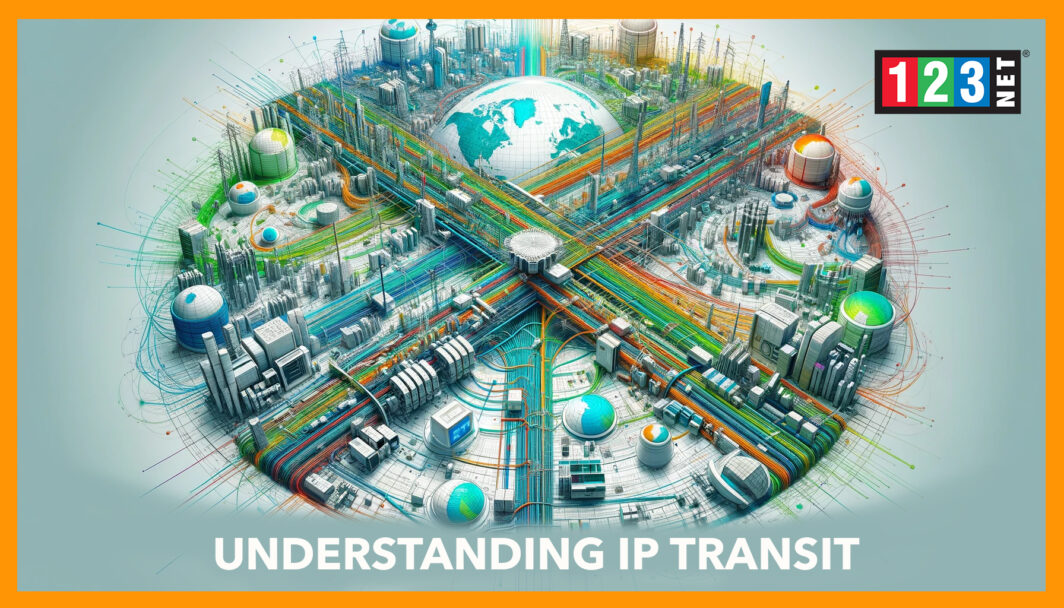
Introduction
IP Transit plays a pivotal role in the internet’s infrastructure, serving as the crucial backbone that connects diverse networks worldwide. This service facilitates the exchange of internet traffic among large networks, or Autonomous Systems (AS), allowing for seamless global communication. Network service providers offer IP Transit. This is ensuring data can traverse from any origin to any destination across the internet, irrespective of geographical boundaries. Grasping the concept of IP Transit is fundamental to understanding the internet’s operational framework on a global scale. It underpins the internet’s ability to maintain continuous connectivity and the uninterrupted flow of information across continents. This understanding highlights the significance of IP Transit in enabling the global reach and accessibility that characterizes the internet today. This is making it an indispensable element of our digital world.
The Role of IP Transit Providers
IP Transit Providers play a critical role in the infrastructure of the internet. It acts as the essential connectors to the internet backbone. This backbone is the main channel through which data travels across the globe. This helps with enabling networks to access and share content worldwide. These providers manage extensive networks, consisting of fiber-optic cables and sophisticated routing equipment. They employ the Border Gateway Protocol (BGP), a crucial system for directing the paths that data packets follow through the internet’s vast landscape. Their operations are indispensable for a wide range of entities, including Internet Service Providers (ISPs), content delivery networks, and large corporations. They depend on steadfast internet connectivity to function on a global platform.
The value of an IP Transit service is gauged by several critical factors: the expansiveness of its network’s reach, its capacity to handle large volumes of data, its reliability in delivering data efficiently, and the quality of its peering relationships. Peering is the process by which two internet networks connect and exchange traffic directly. This is without having to pay a third party to carry that traffic. Providers that boast extensive global networks coupled with strategic peering agreements are seen as offering superior services. These top-tier providers ensure high-speed data transfer rates and minimal latency. These features cannot be overstated in today’s digital era, where the demand for performance-sensitive applications is constantly rising. In this environment, the ability to reliably access and distribute digital content is not just beneficial but necessary for success and sustainability. This intricate ecosystem facilitated by IP Transit Providers is what keeps the internet functional, dynamic, and accessible to users worldwide.
Pricing Trends in IP Transit
The IP Transit market has experienced considerable shifts in pricing structures over the years, driven by a combination of technological progress, a surge in bandwidth demand, and the competitive landscape of the market. As technology continues to evolve at a rapid pace, the cost of delivering high-capacity internet access has steadily decreased. This decline in prices can be attributed to several key factors.
Efficiency and Capacity
Firstly, advancements in technology have significantly improved the efficiency and capacity of network infrastructure. Innovations in fiber-optic technology, routing algorithms, and network management techniques. These have made it possible to transmit data across vast distances with minimal loss and latency. These technological improvements not only enhance the quality of service but also reduce operational costs for providers. As well as savings which can then be passed on to customers in the form of lower prices.
Demand for Bandwidth
Secondly, the increasing demand for bandwidth, driven by the proliferation of digital content, cloud computing, and the Internet of Things (IoT). It has prompted providers to expand their network capabilities. As networks grow and scale, the cost per unit of data transmitted decreases, enabling providers to offer more competitive rates.
Competition
Lastly, the competitive dynamics of the IP Transit market play a crucial role in pricing. With numerous players vying for market share, competition has become fierce, pushing providers to lower their prices to attract and retain customers. This competitive pressure ensures that prices continue to trend downwards, making high-capacity internet access. Increasingly affordable for both network operators and end-users.
This downward trend in pricing is anticipated to persist as providers further expand their networks and leverage technological innovations to improve efficiency and reduce costs. The combination of these factors suggests a future where high-quality internet access becomes even more accessible. This is enabling continued growth and innovation across the digital landscape.

Challenges and Solutions in IP Transit
Expanding Network
The IP Transit industry is navigating a labyrinth of challenges as it strives to keep pace with the escalating demand for internet connectivity. This demand, fueled by the digital transformation of businesses, the proliferation of online services, and the ever-growing consumption of digital content, requires the industry to scale its infrastructure significantly. However, expanding network capacity is not the only hurdle; providers also face the daunting task of mitigating sophisticated cyber threats and managing intricate peering relationships. Which are critical for ensuring the seamless flow of data across the internet.
Network Upgrades
To overcome these obstacles, IP Transit providers are channeling investments into network upgrades and the adoption of cutting-edge security measures. The objective is clear: to fortify network reliability and safeguard against the increasing prevalence of cyberattacks. Which threaten the integrity and privacy of data traversing the global internet.
Innovative Solutions
Innovative solutions are at the forefront of the industry’s response to these challenges. Providers are exploring more efficient routing protocols to optimize data paths and reduce latency, thereby improving the overall performance of the internet. The expansion of peering agreements is another strategic approach being pursued. By enhancing their peering networks, providers can ensure more direct routing of traffic, which not only improves speed and reduces congestion but also lowers operational costs.
Moreover, the industry is placing a greater emphasis on understanding and catering to the unique needs of its clientele. Recognizing the criticality of customer growth and satisfaction, providers are tailoring their services to better align with customer expectations. This customer-centric approach is fostering higher levels of satisfaction and loyalty. This is ensuring that providers remain competitive in a market that is both challenging and dynamic. Through these concerted efforts, the IP Transit industry is steadfastly addressing its current challenges. This positioning itself for sustainable growth and continued innovation in the face of an ever-evolving digital landscape.
FAQs on IP Transit
- What is IP Transit and How Does it Work? A: IP Transit is a service that allows networks to connect to the internet backbone, facilitating the exchange of internet traffic globally. It operates using BGP Routing, which determines the best paths for data packets to travel across the internet.
- How Do IP Transit Costs Vary by Region? A: Costs vary based on demand, network infrastructure availability, and competitive dynamics in each region. Generally, regions with well-developed infrastructure and high competition, like North America and Europe, tend to have lower prices compared to emerging markets.
- What Makes a Good IP Transit Provider? A: A good provider offers extensive network coverage, reliable connectivity, competitive pricing, and excellent customer service. They should also have a strong presence in key geographic markets and robust peering agreements.
- Future of IP Transit: What to Expect? A: The future of IP Transit lies in the continuous expansion of global internet infrastructure, driven by the demand for higher bandwidth and lower latency. Innovations in network technology and strategic expansions in emerging markets will shape the evolution of IP Transit services.
In conclusion, IP Transit is a foundational service that underpins the global internet, facilitated by key providers and driven by the need for seamless global connectivity. As the internet continues to grow, the role of IP Transit providers in ensuring the efficient and reliable transfer of data across the world becomes increasingly important.





